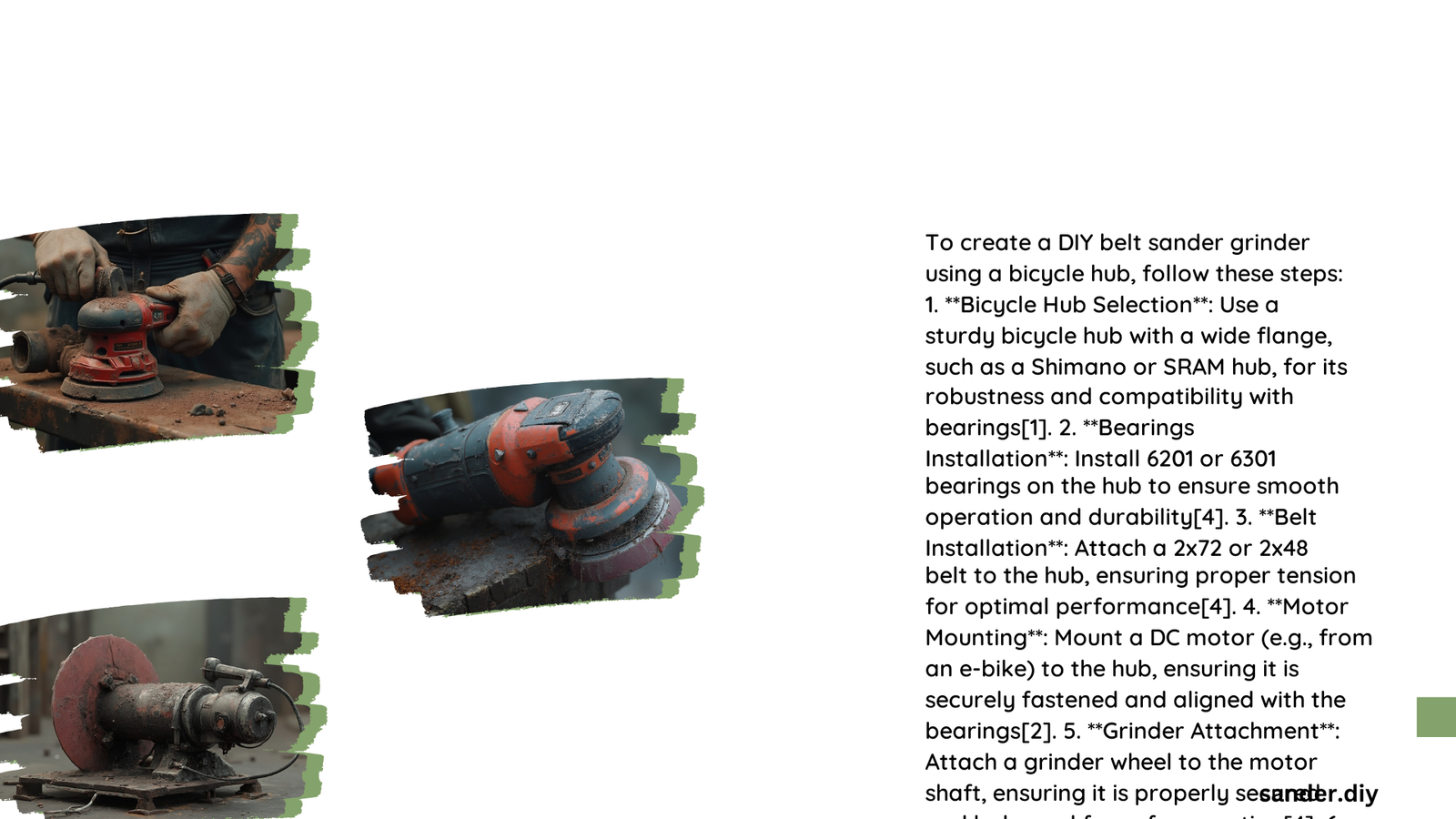Transforming a discarded bicycle hub motor into a versatile belt sander grinder represents an innovative approach to workshop tool creation. This DIY project enables makers to repurpose electronic waste while constructing a robust, customizable sanding machine capable of handling various material preparation tasks. By leveraging existing motor components and strategic modifications, hobbyists and professional craftspeople can develop a cost-effective solution that combines mechanical ingenuity with practical functionality.
What Makes a Bicycle Hub Motor Suitable for Belt Sander Conversion?
Bicycle hub motors, typically sourced from electric bikes or hoverboards, offer unique advantages for DIY belt sander projects:
Motor Characteristics
- Power Range: 500-1500 watts
- Base RPM: 700-1200 rotations per minute
- Torque Capabilities: High initial torque
- Voltage Requirements: 36-48V DC
Why Choose a Bicycle Hub Motor?
| Advantage | Description |
|---|---|
| Cost-Effective | Salvaged motors reduce project expenses |
| Robust Design | Industrial-grade construction |
| Modifiable | Can be adjusted with electronic speed controllers |
| Readily Available | Easy to source from old electric bikes |
How to Select the Right Bicycle Hub Motor?

When selecting a hub motor for your belt sander grinder, consider these critical factors:
- Motor Condition
- Inspect for physical damage
- Check bearing integrity
-
Verify winding resistance
-
Performance Parameters
- Evaluate maximum RPM potential
- Assess torque output
- Confirm compatibility with planned modifications
What Materials Are Required for Conversion?
Essential materials for your DIY belt sander grinder include:
- Structural Components
- 6mm steel sheet metal
- Robust hinges
-
M6 mounting hardware
-
Electrical Components
- RC car electronic speed controller (ESC)
- Power supply (36-48V)
-
Appropriate gauge wiring
-
Sanding Components
- 2″ x 42″ sanding belts
- Roller bearings
- Tensioning mechanism
How to Modify the Bicycle Hub Motor?
Successful conversion requires precise modifications:
Motor Preparation Steps
- Disassemble hub motor completely
- Remove unnecessary internal components
- Flatten mounting surfaces using lathe
- Reinstall critical mechanical elements
- Install custom mounting adapter
Speed Control Techniques
- Use RC car ESC for precise RPM management
- Implement variable speed control
- Ensure stable power delivery
What Are Potential Challenges?
Common conversion challenges include:
- Speed Limitations
- Base motor RPM might be insufficient
-
Requires electronic speed controller modifications
-
Mechanical Alignment
- Precise shaft mounting
- Belt tracking accuracy
- Vibration minimization
Safety Considerations for DIY Belt Sander
Critical safety protocols:
- Wear appropriate personal protective equipment
- Implement emergency stop mechanism
- Ensure stable mounting
- Use dust collection system
- Maintain proper electrical insulation
Cost Breakdown
| Component | Estimated Cost |
|---|---|
| Hub Motor | $50 – $100 |
| ESC | $20 – $50 |
| Metal Sheets | $30 – $70 |
| Sanding Belts | $15 – $40 |
| Miscellaneous Hardware | $20 – $50 |
| Total Estimated Project Cost | $135 – $310 |
Conclusion
Creating a DIY belt sander grinder using a bicycle hub motor offers an exciting opportunity to repurpose existing technology while developing a versatile workshop tool. Careful planning, precise modifications, and attention to safety transform discarded components into a functional, powerful sanding solution.
